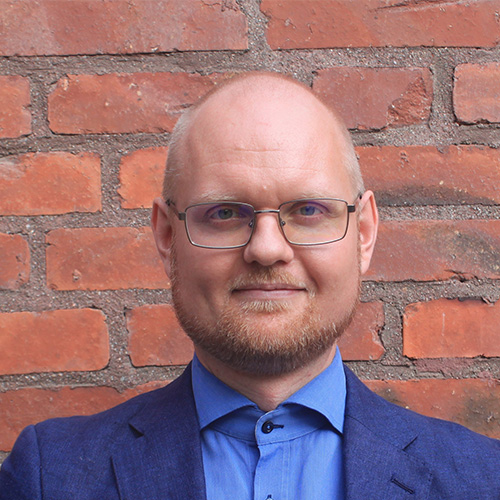Where are we heading, and where do we want to go?

Hampus Berg Mårtensson at the Department of Sustainable Development, Environmental Science and Engineering, will publicly defend his doctoral thesis on 5 June 2025.
What is the topic of your Doctoral Thesis?
The thesis explores transport system futures that align with societal goals, with a special focus on climate targets. It considers the transport system in a broad sense, but also investigates potential future roles for new mobility services. Mobility services refer to services that enable mobility through ride-sharing and vehicle-sharing.
In the studies conducted, my coauthors and I have developed and analyzed scenarios that show what future transport systems in line with climate goals might look like. Among other things, we have explored possible roles for electrification, biofuels, and vehicle efficiency improvements. A more in-depth approach has been taken to investigate potential future roles for new mobility services. In addition to including the services in the self-developed scenarios, reviews of other future-oriented studies have been conducted to map out the opportunities and challenges related to the contribution of new mobility services to a sustainable transport system. The dissertation also examines the potential role of the services in avoiding transport, enabling a shift from car use to other modes of transport, and improving the environmental performance of cars when they are used.
Why did you choose this topic?
I completed my Master’s degree at Lund University’s Faculty of Engineering in Environmental Engineering in 2019. During my studies, I realized that aligning the transport system with Swedish and international climate targets is a major challenge. I wanted to find a way to use my knowledge to contribute to finding a solution.
What are the most important results?
The results show that a combination of technology and behavioral changes will be necessary to achieve Swedish and global climate targets. Significant contributions to emission reductions come from, e.g., electrification, biofuels, and improved vehicle energy efficiency. Despite this, there is a need to reduce transport volumes from cars, aviation, and road freight to an extent that represents a major trend-break. This is partly due to limited technological maturity in certain modes of transport, such as aviation, and the long turnover time for passenger cars, which limits the pace of electrification. Several of the resources needed for the transition are also limited in availability, such as bio-based raw materials and battery metals. In addition, even vehicles with low or zero tailpipe emissions lead to significant indirect emissions associated with, for example, vehicle and energy production. Because of this, large vehicle fleets may be difficult to reconcile with current ambitions for emission reductions.
The thesis also contributes to the understanding of potential futures for new mobility services. Among other things, it identifies mechanisms through which various mobility services and other digital services can help to avoid transport, enable a shift from car travel to other modes, and improve environmental performance when cars are used. A challenge is that the mechanisms contributing positively and negatively are closely intertwined in non-linear relationships and embedded in a context that shapes the effects that arise. In addition, 168 so-called tensions are identified that threaten the realisation of sustainable transport system futures in which mobility services play a larger role. This highlights the need for an attentive approach, including a systems perspective that links individual mechanisms and effects in order to better understand the overall impact these services may have. Such an approach is necessary to ensure that new mobility services make a substantial contribution to a sustainable future transport system.
Did you come across something unexpected during your thesis research?
After many years of doctoral studies, it no longer feels surprising—but in the beginning, I had higher hopes that technology could solve a larger part of the problem. Technology remains, of course, a crucial part of the transport system transition, but it is not sufficient to meet the climate targets within the given timeframe. Another insight I have gained is a deeper understanding of the limitations of modeling when it comes to exploring possible futures for the transport system. Modeling is a fantastic tool, but there needs to be an awareness of its limitations and the impact of the (necessary) assumptions when results are used as a basis for decision-making. The thesis moves between modeling and more qualitative approaches.
Who will benefit from your results? What kind of impact may it have on surrounding society?
I hope that many actors engaged in the transition of the transport system will find this work useful. This includes policymakers, government agencies, cities, and researchers. In addition, the work may be of interest to private actors who offer mobility services or are otherwise involved in the the transport sector. Even transport system actors who do not see themselves as actively participating in the transition—but still need to respond to it—may be able to benefit from the results. The thesis cover essay (which is publicly available in Diva) includes a dedicated section with policy implications (Section 5.2) based on the findings from the studies included in the thesis.
What will you do next and where can one reach you?
That remains to be seen. My dream is to continue doing research, and I’ve collected over 100 ideas for potential future research projects. Some of them are probably quite useless, but I hope—and believe—that a few could make a meaningful contribution to our understanding of how we can achieve a transition to a sustainable transport system. I’ll be at KTH until the end of June, so if you want to get in touch, you’re welcome to use the contact information on my KTH profile.
